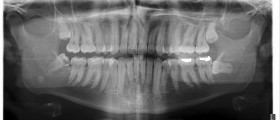
A liver hemangioma is a benign tumor made up of a tangle of blood vessels. Apart from the liver hemangiomas also affect the skin and can develop on any part of the body. Small liver hemangiomas are usually found accidentally during ultrasound of the abdomen and they are not harmful. On the other hand, if these benign tumors are way too large there is chance they will eventually start to bleed and cause certain complications.
What are Causes of Liver Hemangioma?
Scientists have not managed to identify the actual cause of liver hemangioma. The condition is in many cases considered congenital (present at birth). Still, there are certain factors that may contribute to formation and growth of these tumors. For example, it may be that estrogen aids in capillary and hemangioma proliferation. This is why liver hemangiomas often affect pregnant women, and women in general. Women who undergo hormone replacement therapy are also at higher risk of developing liver hemangioma.
Clinical Characteristics of Liver Hemangioma
Since majority of liver hemangiomas generally do not exceed 2 inches in diameter they are practically asymptomatic. Only small number of patients may show symptoms and signs of liver hemangioma and these basically occur if the tumor is large enough. Large hemangiomas may cause abdominal pain (located in the upper right quadrant of the abdomen). Patients may additionally complain about feeling of fullness after eating, nausea, vomiting and lack of appetite. However, the fact is that majority of these tumors remain undiagnosed until a person undergoes ultrasound of the abdomen. Diagnosis and Treatment for Liver Hemangioma
As it has already been mentioned the easiest way to diagnose liver hemangioma is to perform ultrasound of the abdomen. The tumor can be also confirmed with CT scan or MRI. Once liver hemangioma is found (particularly if it is large) the doctor recommends regular check-ups and repeated ultrasound in order to have insight in further growth of the tumor.
Small liver hemangiomas, therefore, do not require any treatment at all. On the other hand, if the tumor is quite large, associated with pain or there is compression of nearby structures and tissues it needs to be surgically removed. Patients in whom the tumor is closely connected to adjacent structures undergo artery ligation or embilisation. Both of these procedures block further blood flow to hemangioma, This way the tumor can significantly shrink in size. In rare occasions patients undergo radiation therapy although liver hemangiomas may be quite resistant to this type of treatment.

















Your thoughts on this
Loading...